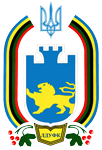Please use this identifier to cite or link to this item:
https://repository.ldufk.edu.ua/handle/34606048/22168Full metadata record
| DC Field | Value | Language |
|---|---|---|
| dc.contributor.author | Pavlenchyk, Nataliia | - |
| dc.contributor.author | Mekhovych, Serhii | - |
| dc.contributor.author | Bohoslavets, Oksana | - |
| dc.contributor.author | Opanashchuk, Yurii | - |
| dc.contributor.author | Hotra, Viktoriya | - |
| dc.contributor.author | Gayvoronska, Inna | - |
| dc.contributor.author | Павленчик, Наталія | - |
| dc.date.accessioned | 2019-09-16T07:14:50Z | - |
| dc.date.available | 2019-09-16T07:14:50Z | - |
| dc.date.issued | 2019 | - |
| dc.identifier.citation | Integration of Partial least squares path modeling for sustainable tourism development / Nataliіa Pavlenchyk, Serhii Mekhovych, Oksana Bohoslavets, Yurii Opanashchuk, Viktoriya Hotra, Inna Gayvoronska // International Journal of Recent Technology and Engineering. - 2019. - Vol. 8, is. 2. - P. 4309-4312. (Scopus) | uk_UA |
| dc.identifier.uri | http://repository.ldufk.edu.ua/handle/34606048/22168 | - |
| dc.description.abstract | This study aims to reveal which factors and their indicators are significant (primary) for sustainable tourism from the point of view of the travellers themselves. The study was conducted in two stages and involved 415 (first phase) and 577 (second phase) respondents. The first stage was conducted online and personal communication, which allowed to question respondents in detail. The second stage was conducted only online using polls on Facebook, Twitter, Google Docs and email. Primary data were presented in the form of respondents' submissions, obtained as a result of observation through the distribution of questionnaires. Results were processed using a priori ranking technology - expert methods - using MS Excel for automatizing the process. The study revealed what factors generally accepted today and their indicators are significant (primary) from the point of view of the travellers themselves. The division of the empirical part of the study into two components allowed for a more detailed review of the opinions of the respondents and the identification of 9 leading indicators. This article draws attention to the fact that it is necessary to study phenomena not only from a theoretical point of view but also to test empirically, involving the participants in the process. The study will be useful for countries and regions that are committed to sustainable tourism. Technology, as a whole, can be used in any industry where people's opinion matters. The study is based on the theoretical basis of modern researchers and is supported by an experiment involving direct participants in the process (travellers), i.e. allows you to uncover sustainable tourism and factors affecting it from different angles. | uk_UA |
| dc.language.iso | en | uk_UA |
| dc.subject | sustainable tourism | uk_UA |
| dc.subject | tourism industry | uk_UA |
| dc.subject | expert assessment method | uk_UA |
| dc.subject | a priori ranking | uk_UA |
| dc.subject | affecting factors | uk_UA |
| dc.title | Integration of Partial least squares path modeling for sustainable tourism development | uk_UA |
| dc.type | Article | uk_UA |
| Appears in Collections: | Наукові праці професорсько-викладацького складу ЛДУФК в базах даних Scopus, WoS, Tomson Reuters | |
Files in This Item:
| File | Description | Size | Format | |
|---|---|---|---|---|
| N. Pavlenchyk, S. Mekhovych, O. Opanashchuk, V. Hotra, I. Gayvoronska.pdf | 405.99 kB | Adobe PDF | View/Open |
Items in DSpace are protected by copyright, with all rights reserved, unless otherwise indicated.
